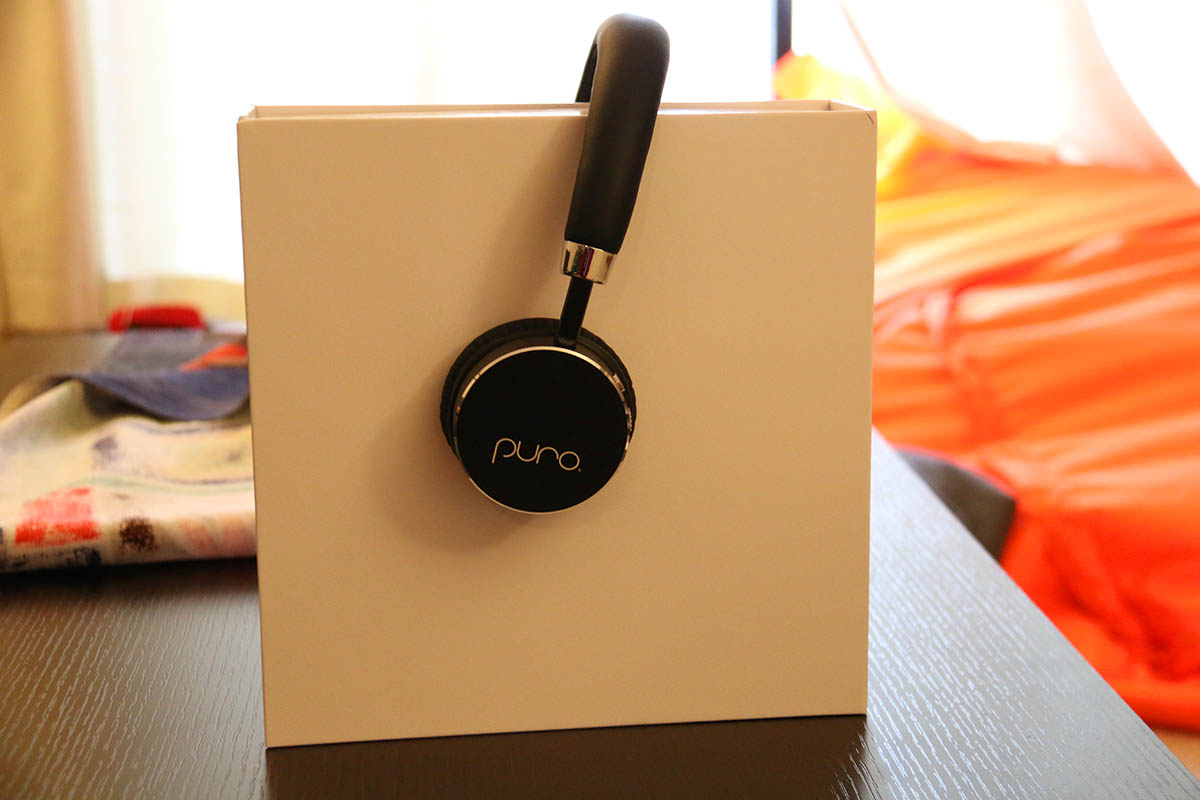
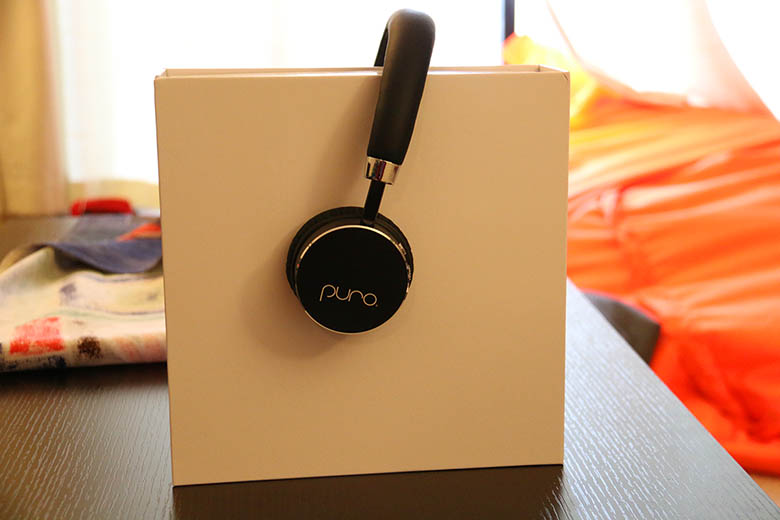
The Master Switch


The Master Switch
One of the things that we aren't very good at (along with just about everybody who loves music) is looking after our hearing. When there are so many fantastic headphones and speakers to listen to, so many amps and speakers to test, and so many wondrous artists and albums to bump, who cares about resting your ears? The problem is, just about every single study done on the subject shows that prolonged listening at the wrong levels really isn’t very good for your hearing, and while audio companies are undoubtedly aware of this, it’s not as if it’s in their interests to tell you to listen less. That’s why the BT5200 Bluetooth headphones from Puro Sound Labs are so welcome. For the first time, a pair of headphones not only wants you to enjoy your music, but to enjoy it for as long as humanly possible.

Before we go into the actual construction of the headphones themselves, let’s talk about this hearing protection thing. It’s the killer selling point of the Puro BT5200s, after all, so it’s worth spending a little bit of time on it.
It’s almost ridiculous in its simplicity. Above the controls on the left earcup is a single tiny light. If it’s flashing green, then your music is playing at a volume of 85 decibels (dB) or less, and you can comfortably listen to it for up to eight hours. Flashing yellow, and it’s in the 85dB-95dB range; you can still continue listening, but you should probably do it for no longer than an hour or two. If it’s flashing red, you’ve crested 95dB, and you’ve got about fifteen minutes of listening before you do permanent damage to your ears.
On the surface, this kind of feature might seem superfluous. After all, don’t we know when we’re listening to something that’s too loud? The answer is: no, of course we don’t, or hearing loss wouldn’t be a thing. Humans are absolutely terrible at figuring out where their limits are, so a feature like this is hugely useful. You can push things up to the very maximum level of green light, which is surprisingly loud, and leave it safe in the knowledge that you can listen for a full work day without causing any issues in your ears.
Puro worked with the Hearing Health Foundation to figure this all out, and it is explained in much more detail in a leaflet that comes with the headphones. The clever part of it is that it requires absolutely no user input. You don’t have to do anything but quickly glance at a light; as long as there is music playing, it’ll be active. Although we do wish that there was some kind of audible warning when you crossed the threshold, it’s still a system that works remarkably well. If you have any kind of concerns about your hearing, or long-term damage, you should absolutely be looking at this pair.
Outside of that, the design is both remarkable and unremarkable. It’s unremarkable in that it does nothing particularly noteworthy, and simply gets the job done. You get a soft faux-leather headband, equally soft on-ear cups, and plastic housing with a set of chunky controls on the left hand side. Theres an on/off switch (a feature which is not always guaranteed on Bluetooth cans, and is nice to have), a pairing switch, and two volume buttons. There’s a headphone jack for non-Bluetooth use, and a socket for a microUSB charging cable. We did have some issues with the controls, which we’ll go into in the Sound section below, for the most part, they work well. Pairing was easy, and thanks to the inclusion of an aptX codec, dropouts were rare. Battery life was good, too: we got around twenty hours out of the BT5200s before they needed a charge. Normally we’d say something like, “We tested the battery life playing at around 70% volume”, but in this case, we can confidently say that we were hovering right around 85dB. Yeah, science!
Left and right markers are clearly visible in the inside of the cups themselves, as well as on the band, and the cups turn ninety degrees. All in all, simple, and effective. So what, exactly, is remarkable about the design?
Simply put: it’s a design that a lot of companies use. You will find virtually the exact same construction in headphones from Satechi, Pioneer, Diskin, BÖHM, plenty of others. The same headband, identical cups, same control layout – although, to be clear, the volume measurement feature belongs to Puro, and feature sets can differ between the headphones. The reason for the identical construction is that the headphones are a stock model that comes from a factory used by several different audio brands. Is this, you might reasonably ask, a bad thing, necessarily? We say no. While you’re not going to be wearing a pair of headphones that look enormously distinctive, the design is reliable, and works well. If you aren’t interested in design at all, or being fashionable, then you can quite comfortably buy these.
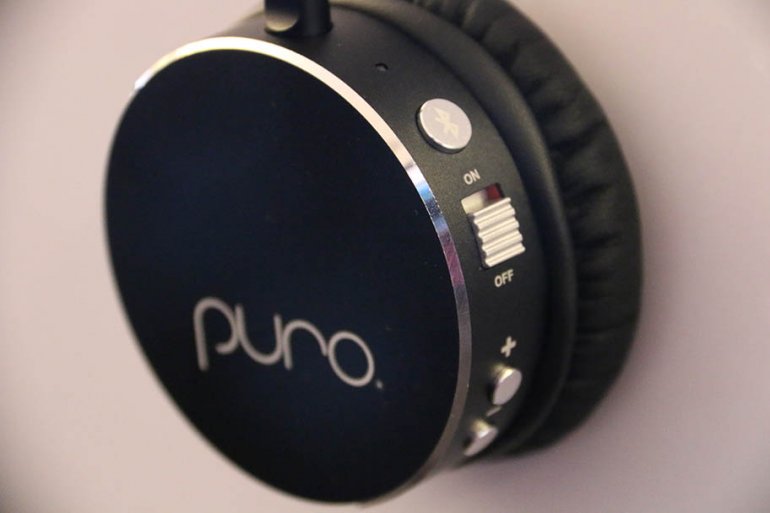
One of the reasons we don’t have a problem with the identikit design is that in terms of comfort and fit, it works incredibly well. The soft cups sit snugly on the ears, and manage to stay there for long periods without getting too uncomfortable, even taking into account things like sweat. The clamping pressure of the headband isn’t too tight, and the plastic adjusters above the cups make it easy to find a good size. Isolation is solid: there’s no active noise cancellation, but you won’t miss it.
The headphones sit easily around the neck as well, and their light weight (just under four ounces) make them easy to wear. One slightly odd element we noticed was that when the headphones were around the neck, with the cups lying flat, the rotation was the wrong way: the inside of the cups faced outwards. It’s a small thing, but a peculiar one. Still, in terms of comfort, there’s very little wrong here.
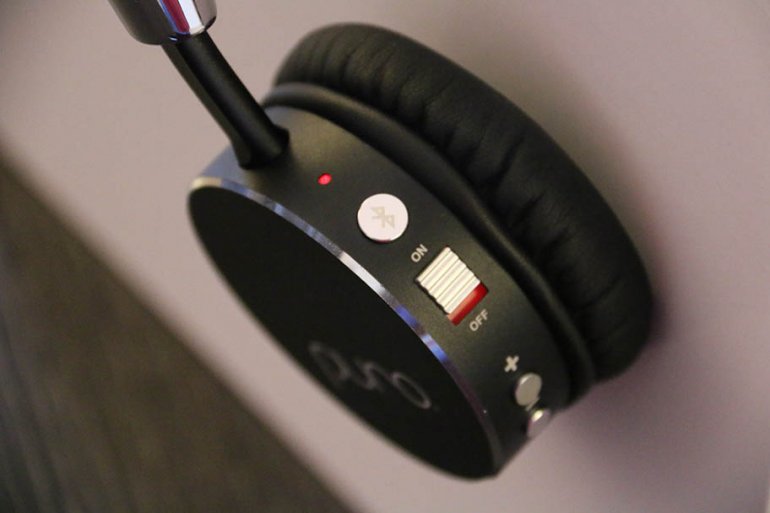
We were a little bit worried before we first tried these. Identikit headphones don’t always offer very good sound quality – we aren’t exactly talking crystal-neodymium drivers here, or voice coils formed from the tears of angels. But after even a short time, we realised we needn’t have worried. The sound of the BT5200s is never going to challenge more high-end headphones like these, but it’s perfectly acceptable, and frequently very good.
The bass, in particular, needs singling out. It’s a lot better than it has any right to be: rounded, full, with enough weight to be impactful without getting in the way of the other sounds. It did muddy up a little when we threw genres like heavy metal at it, but for the most part, it performed extremely well. The rest of the frequency spectrum was decent, if unspectacular, although we got a real kick out of the stereo spread, which was far better than average, and allowed us to pick out little details. Admittedly, this is about the bare minimum we’d expect from a $150 pair of headphones, but there’s very little to complain about here. We’ve listened to cans that cost far more and offer far less, and these are certainly among the best budget on-ears we’ve tested.
Distortion wasn’t an issue, either. As we almost never turn the volume into the yellow/red zone, things were kept loud but still relatively clear. And the decent isolation from the soft cups really help things, blocking out external noise almost as effectively as an active circuit would have done.
We do, however, have to single out the volume controls for being seriously quirky. It is a generally accepted standard among headphone controls that three buttons will handle almost all situations. Your volume up and volume down buttons can take care of the sound level, and a single, central button can handle everything from pausing and skipping tracks to answering calls and rewinding. Short of innovations like the little switch control on the Sennheiser Momentum Wireless 2.0 (full review here), this is how most headphone companies do it.
The BT5200s take a slightly different approach, and not a very good one. They do have three buttons, but if you want to skip a track, you’ll need to tap the volume up button twice - or the volume down button to go back. That’s…weird. There’s no getting away from it. It’s a truly bizarre choice, and it makes skipping tracks immensely frustrating. Since you’ll almost never click fast enough to prevent the volume from going up one level before the track is skipped, doing it quickly becomes an exercise in frustration. It also makes no sense, because there’s no reason that a double-click on the Bluetooth button couldn’t do this - a single click on that button pauses the track, after all. Holding down on the volume buttons changes the volume, as you’d expect, but we can still can’t think of a single reason for it to be arranged this way.
Call quality was good, with minimal distortion. Everything is handled on the Bluetooth button, and it’s all fairly easy to get to grips with. No surprises there.
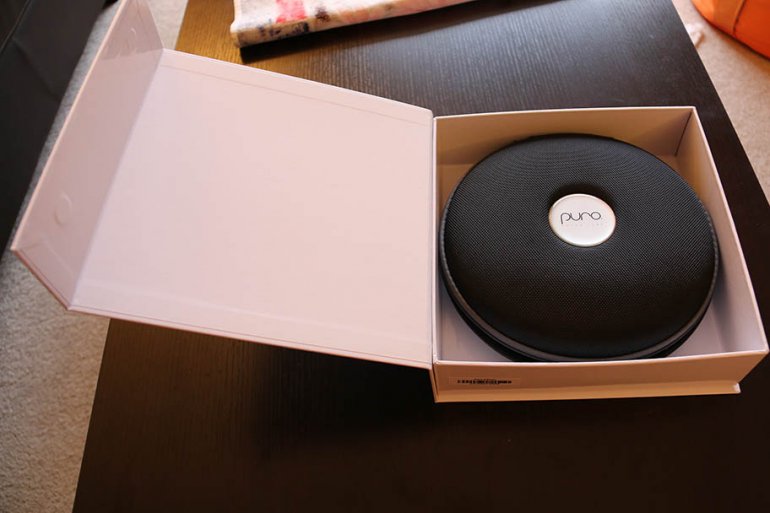
It’s not quite leather flight cases, but we still got a real kick out of how the headphones were packaged and presented.
The contents were housed in a simple white box with a flip-top lid, a magnetised snap holding it shut. Inside is a terrific little circular carrying case, strong and rigid, with the Puro Sound Labs logo in the middle. Unzip it and flip it open, and there’s a bracket for the headphones to fit around, making placement dead simple. On the other side of the case, a simple wire mesh holds all your accessories. Even with the headphones inside it, the case is slim enough to drop into a backpack or handbag, and the whole thing is incredibly light. Top marks here.
You don’t get any additional accessories beyond the basics, although it’s hardly necessary. There is a simple 3.5mm-to-3.5mm headphone jack, for when you don’t want to use the battery, and a basic microUSB charging cable. You can slot these into the mesh without a problem, and there’s still plenty of room for anything else you care to stick in there.

If you can forgive the identical looks and design, and get past the utterly bizarre volume controls, then you've got a real winner here. These are never going to trouble the big dogs in terms of sound quality, but for what they are, they are eminently worth your time. They offer excellent sound, terrific bass, great accessories and usability. If nothing else, they would be worth the price tag for the genuinely-useful volume monitoring light. It’s such a simple little system, and it works incredibly well. It was actually quite a relief knowing that we could keep things relatively loud without doing any damage to our eardrums.
Some might question the price point. At $150 on Amazon, it’s certainly more expensive than any of its identikit cousins. We say: it’s worth it. The BT5200s are a highly competent pair of wireless headphones that get the job done, and make it easy to enjoy your music. Job done.
See the Puro Sound Labs BT5200s on Amazon

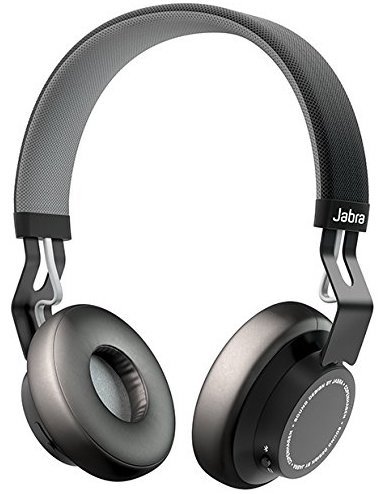 These fulfil two roles that the Puros don’t. Firstly, they look much, much cooler, and secondly, they deal with sweat and active movement much better. We recommend going for these if you plan on using on-ear headphones at the gym, or if you want something that looks a little bit more distinctive.
These fulfil two roles that the Puros don’t. Firstly, they look much, much cooler, and secondly, they deal with sweat and active movement much better. We recommend going for these if you plan on using on-ear headphones at the gym, or if you want something that looks a little bit more distinctive.
For what it’s worth, we think that the sound quality of the Puros is a little bit better, particularly in the low-end, but then again, they do cost nearly double what the Move Wireless do. Still, Jabra know what they are doing, and the Move Wireless have become a firm favourite among headphone buyers very quickly.
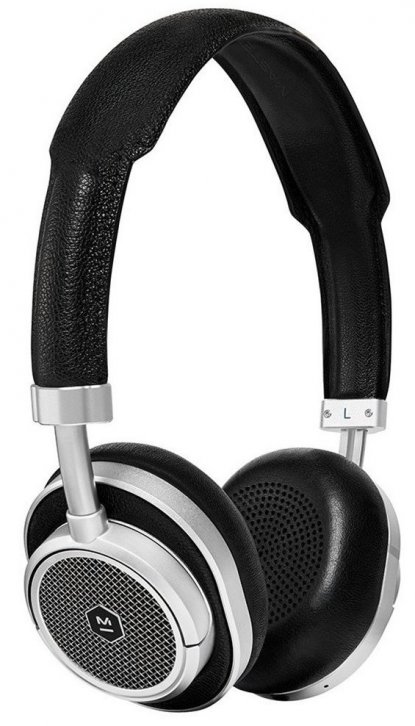 While they are vastly more expensive than the Puros, costing three times as much, there’s no question that these are about the best on-ear Bluetooth headphones on the market right now. We’ve just been sent a pair for review, and will be posting that soon, but you can trust our initial impressions: these are mustard.
While they are vastly more expensive than the Puros, costing three times as much, there’s no question that these are about the best on-ear Bluetooth headphones on the market right now. We’ve just been sent a pair for review, and will be posting that soon, but you can trust our initial impressions: these are mustard.
From the ultra-soft and comfortable earcups to the open-back design and exquisite sound, there’s very little to dislike about the MW50s. They might not offer volume monitoring, but they make up for it with sheer luxury goodness. If you feel like spoiling yourself, and getting some truly legendary design, go for these.
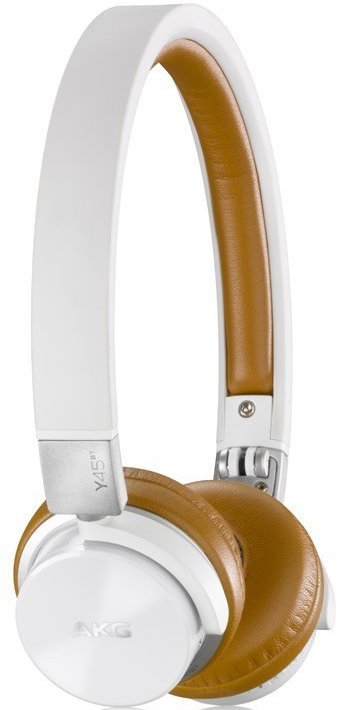 On-ears below $200 are where you start seeing companies that look suspiciously like knockoffs. AKG is not one of those companies. This is a storied headphone maker with plenty of experience in putting together good cans, and they struck gold when they released the Y45BT.
On-ears below $200 are where you start seeing companies that look suspiciously like knockoffs. AKG is not one of those companies. This is a storied headphone maker with plenty of experience in putting together good cans, and they struck gold when they released the Y45BT.
It’s a very simple pair of wireless headphones with good connectivity, comfort and sound. It’s the last part that is probably the biggest draw here: audio quality is crisp and clean, with a great stereo spread. Ultimately, you’d choose this over the Puros if you want better design, but even though we love AKG, there’s not a huge amount separating the two.
| Headphones | Price | Weight | Driver | Impedance | Cables | Battery |
|---|---|---|---|---|---|---|
| Puro Sound Labs BT5200 | $150 | 3.9oz | 40mm | Unknown | 1 x 3'9" | 20 Hours |
| Jabra Move Wireless | $80 | 5.6oz | Unknown | Unknown | 1 x 3'9" | 8 Hours |
| Master & Dynamic MW50 | $450 | 8.5oz | 40mm | 32Ω | 1 x 4'1" | 16 Hours |
| AKG Y45BT | $140 | 5.3oz | Unknown | 32Ω | 1 x 3'4" | 12 Hours |